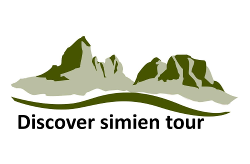Omo Valley Tribal Exploration & Safari.
The Omo Valley, home of Lucy, the oldest known Homo sapiens, is home to over 500,000 indigenous, tribal people. These indigenous tribes have been painting their bodies with pulverized minerals for millennia’s. The paintings are used to designate position, for ritual, to ward off illness, to attract the opposite sex, to associate with family, a tribe or an animal, and to impress tourists.
Along with body paintings, the Mursi tribe, also have a long history of decorative scarring and piercing. Both men and woman pierce their ears and lips with large discs. Mursi woman used to commonly pierce and stretch their lower lip for a plate.
The Valley is located in southwestern Ethiopia, eastern South Sudan and around Lake Turkana in north Kenya.
Karo Tribe
The Karo or Kara is a small tribe with an estimated population between 1,000 and 3,000. They are closely related to the Kwegu tribe. They live along the east banks of the Omo River in southern Ethiopia and practice flood retreat cultivation. The crops that are grown by them are sorghum, maize and beans. Only small cattle are kept because of the tsetse flies. These flies are large and consume the blood of vertebrate animals.
Like many of the tribes in the Omo, they paint their bodies and faces with white chalk to prepare for a ceremony. The chalk is mixed with yellow rock, red iron ore and charoal to make its color. Face masks are worn at times and they have clay hair buns with feathers in them. Red clay mixed with butter is put into their hair and clothing is made from animal skin. The women scar their chest believing it makes them beautiful. The men’s scars represent an enemy or dangerous animal killed. They also wear clay hair buns which symbol a kill. A man in the tribe can have as many wives as he wants, but must be able to afford them. Most men will only marry two or three.
Hamer Tribe
Also well known as the hamar or hammer, they are one of the most known tribes in Soutern Ethiopia. They inhabit the territory east of the Omo River and have villages in Turmi and Dimeka. Tourists visit the hamer hoping to see a traditional leaping ceremony (the jumping of bulls).
They are cattle herders and practice agriculture. Very colorful bracelets and beads are worn in their hair and around their waists and arms. The practice of body modification is used by cutting themselves and packing the wound with ash and charcoal. Some of the women wear circular wedge necklaces indicating that they are married. Men paint themselves with white chalk to prepare for a ceremony. Hair ornaments worn by the men indicate a previous kill of an enemy or animal.
The traditional bull jumping is a rite of passage for men coming of age. The event last three days and involves only castrated cattle. The man must jump over a line of 10 to 30 bulls four times completey nude without falling. If this task is complete, the man joins the ranks of the Maza. Maza are other men that have successfully completed the bull jumping event. During this ceremony, the women of the tribe provoke the maza to whip them on their bare backs. This is extrememly painful and causes severe scaring on the women. The scars are a symbol of devotion to the men and are encourged by the tribe. Night dancing called evangadi is also a hamer tradition.
The Hammers have unique huts that are made up of mud, wood and straw.


Surma Tribe
The Surma people live in the remote southwest corner of Ethiopia. The Surma have a basic subsistence and barter economy. Their wealth is based on their cattle, and the main food source is the produce from their own crops. There is very little outside trade. The Surma are a highly monolingual and homogenous society, living beyond most of the influences of the modern world and its technology.
Typical Surma characteristics for both men and women: large earplugs, decorative body painting, the hair shaved in patterns. Women wear a leather garment fastened at one shoulder which encircles the waist like a skirt. Men and children typically wear no clothing. Surma women are noted for the large clay lip plates worn in the lower lip. They have very famous traditional game called Donga.
Donga : is a stick fighting festival of the Surma young men. At a fight, each challenger is armed with a hardwood stick. Each player beats his opponent with his stick as many times as possible with the intention of knocking him down, and eliminating him from the game. Players are usually unmarried men. The winner will be carried on a platform of poles to a group of girls waiting at the open field. The winner holds the privilege to ask among those girls for his own wife
Mursi Tribe
The Mursi live in the lower valley of the River Omo in southwestern Ethiopia and number around 10,000. When we launched this website in 2007, we said that its purpose was to correct the exoticised view of the Mursi found in guide books and travel articles. It would do this by providing accurate and reliable information about Mursi history, culture and environment and about the pressures and challenges facing them and their neighbours today. We are confident that the website has indeed become a much-used resource for those wishing to learn about Mursi life and culture though we also recognise that much remains to be done to increase the range and depth of the information provided. Recently added sections, for example, include ‘Religion and Healing ’ and ‘Change and Development ‘. Over the next few years, the lives of the Mursi and their neighbours are going to be radically affected by the combined forces of state- sponsored development and global capitalism.



